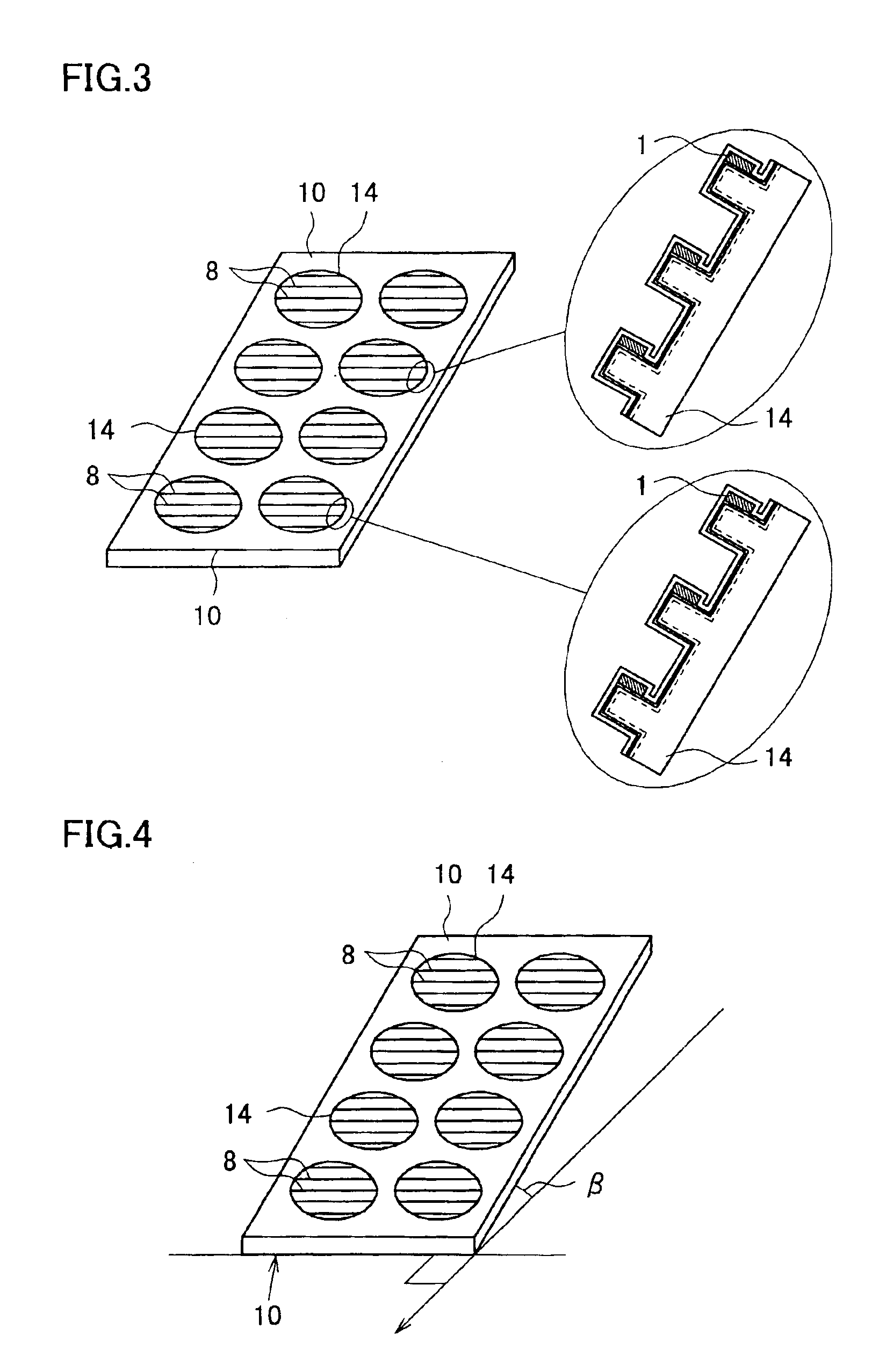Solar cell module and its installing module
a solar cell module and installation module technology, applied in the field of solar cell modules, can solve the problems of low generation efficiency, variation in the amount of photo-generated current, and the failure of oeco solar cell modules to equalize the output current of individual solar cells, and achieve the effect of increasing the daily or annual power generation fully expressing the performance of the solar cell modul
- Summary
- Abstract
- Description
- Claims
- Application Information
AI Technical Summary
Benefits of technology
Problems solved by technology
Method used
Image
Examples
example 1
[0065]The solar cell shown in FIG. 1 was fabricated by the method described below. First, on the light-receiving surface side of the p-type, single crystal silicon wafer 2 containing gallium, a Group III element, as an impurity (10 cm square, 300 μm thick, specific resistance 0.5 Ω·cm), a plurality of parallel grooves 8 having a square (rectangular) section were formed using a dicer. The groove morphology was defined, as shown in FIG. 19, by a distance (w1) between the grooves of 50 μm, a width (w2) of the groove of 450 μm, and a depth (h) of the groove of 50 μm. Damaged layer produced in the wafer was then removed by etching using an aqueous potassium hydroxide solution, and the silicon nitride film 6 was formed on the back surface using a plasma-assisted CVD apparatus.
[0066]The emitter layer 3 comprising an n+-type region was then formed on the light-receiving surface side of the silicon wafer 2 by thermally diffusing phosphorus, which is a Group V element, so as to adjust the she...
example 2
[0071]As judged from the discriminants (1) and (2) of the invention, the installation at 30° North Latitude and at an installation angle of 35° can yield optimum results when the electrode-forming inner side faces are directed downward. For a demonstration purpose, the inventors installed the solar cell module fabricated in Example 1, in which all electrode-forming inner side faces 1 are unidirectionally aligned, on a roof having a slope inclined 35° away from due south in Yaku Island, Kagoshima Prefecture, Japan situated at 30°20″ North Latitude, and the annual power output was measured. Samples used herein were one solar cell module having electrode-forming inner side faces directed upward and one solar cell module having those directed downward. Measurement results of the annual power output were listed in Table 2.
[0072]
TABLE 2Module havingModule having electrode-electrode-forming innerforming inner side faceside face directeddirected downwardupwardAnnual power118.7117.9output (k...
PUM
 Login to View More
Login to View More Abstract
Description
Claims
Application Information
 Login to View More
Login to View More - R&D
- Intellectual Property
- Life Sciences
- Materials
- Tech Scout
- Unparalleled Data Quality
- Higher Quality Content
- 60% Fewer Hallucinations
Browse by: Latest US Patents, China's latest patents, Technical Efficacy Thesaurus, Application Domain, Technology Topic, Popular Technical Reports.
© 2025 PatSnap. All rights reserved.Legal|Privacy policy|Modern Slavery Act Transparency Statement|Sitemap|About US| Contact US: help@patsnap.com



